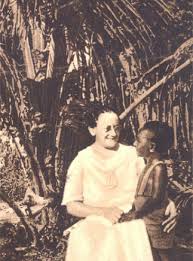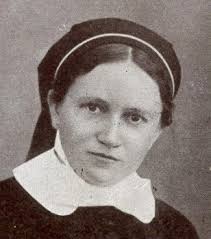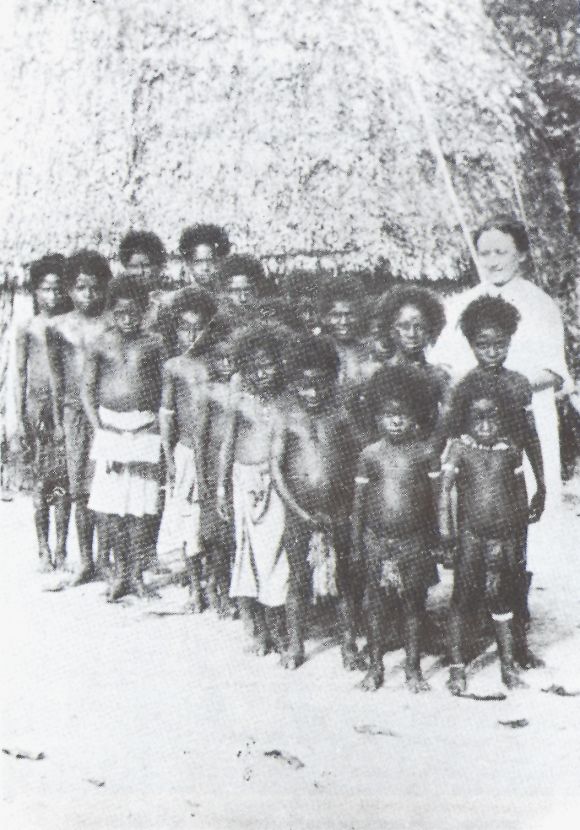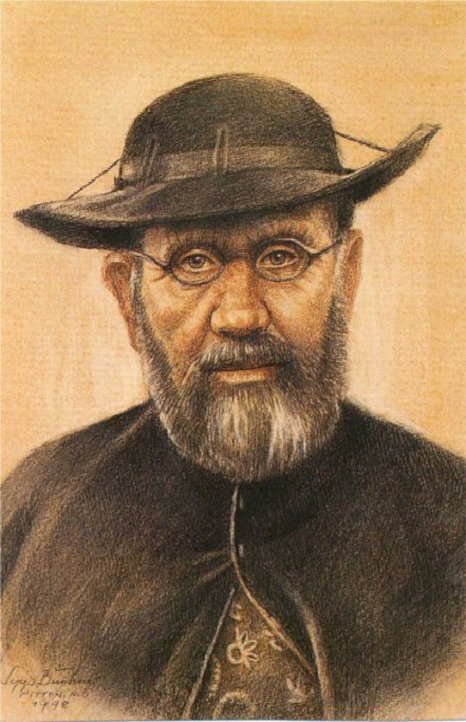Mária Molnár, the martyred Hungarian missionary
The young Mária Molnár
Today we remember with great respect and love the Reformed missionary martyr Maria Molnár, born 131 years ago in Várpalota.
Why about him? Although there is no anniversary of his birth or death, there are several reasons for our choice. Very few people know that he is one of the most famous Hungarian Reformed missionaries. He was one of the rare - and the only - Hungarians who undertook a missionary mission between the two world wars. As a missionary, he became a forerunner of Christian interest in the Third World. His fate is also important for us because he is a martyr of the Hungarian Reformed Church, an Asian victim of World War II.
Mária Molnár was born in Várpalota. She was brought up in the Reformed Church and was herself committed to the Reformed Belmish mission. She herself did not want to apply for missionary service at first, because she thought (and I should note here that many people still think so today) that there was a great need for soul-saving in Hungary. He also went to Germany in the mid-twenties in order to improve his language skills and to study the literature and methodology of the Belmission more easily. But it was at this time that the Lutheran pastor Friedrich Doepke, the head of the mission in Manus, visited the country one evening to report on the missionary work on the Admiralty Islands.
I guess many people have not heard of Manus or the Admiralty Islands. I confess, neither have I. No wonder, it's a long, long way from us. It's part of Papua New Guinea.
However, Mária Molnár knew from the first meeting that her place was in Manus, but she fought against this inner urge even when she received the posting order in 1927.
Although his superiors did not want to let him go at first, he tirelessly prepared for his mission and eventually convinced them that he was fit for missionary service. In 1927, when he was 40 years old, he travelled to Pitilu, an island in the Admiralty archipelago, to take the gospel of Christ to the Papuan brothers, who were still not infrequently man-eaters. During the long years he spent with them, he identified with those among whom God had placed him.
Mária Molnár spent nearly 15 years as a missionary on the island of Pitilu, 3-4 km from the main island of Manus, in the South Pacific, tens of thousands of kilometres away, on the other side of the world. He often swam the distance between islands.
Above all, he preached the word of God. He wanted to deliver the natives from the everlasting fear of demons, from sickness and ultimately to show them the possibility of a new life in Jesus Christ. He not only preached spiritual salvation, but also physical healing. This too was a task from God. She healed the sick who came to her, and was at once doctor, midwife, nurse, preacher, pastoral worker, fireman, or human rights expert and teacher. Her house was the centre of civilisation in the country, where she taught children and adults and treated the sick. He spread the useful knowledge of civilization, and later even established a school.
Children in Pitilun
Her personality radiated directness and sincerity, which is why the people of Pitilu embraced her from the first moment she arrived, and respected her almost as a mother, something that could not be achieved with words alone.
"It is in vain to speak of Scripture and Christ until we can clearly show that someone takes them seriously," he wrote in a letter in 1928. - Facts are needed here too. It is in vain to proclaim the salvation of Jesus if I myself am not willing to give my life to death. Facts speak. When I go to a patient one night and accompany my timid companion home, so that I can walk alone after midnight through the island: that impresses me, that speaks to them. And that I share my food, which is not much, but I share it with whoever wants it, so that they can see for themselves that I have less, and they bring me so much fish that I can't resist eating it. So then, if I need canoe, they will gladly give it to me, but only from Manus to Pitilu, and from Pitilu to Manus they will not take me, so that I may remain here permanently in their circle."
Mária returned home briefly in 1935 and gave lectures on her work in Sárospatak and Komárom, among other places. After seven years, she said, she did not regret having volunteered as a missionary. In his letters he wrote: "Despite all the difficulties, my life was still peaceful. I was comforted by the sea, by the peace of the people, but above all by the knowledge that God had placed me here and that I had a home here. I had never felt so at home anywhere before." I just ask you, my brothers and sisters, to pray for me. I ask only that you pray for me, pray for me, not to be thrown into the sea, not to be devoured by man-eaters, but that I may remain always with my faithful Christ."
He spent fifteen years among the Papuans. He learned their language, translated parts of the Bible and songs for them. One of the results of Mary Molnár's work was the publication of the Gospel of Mark in the Pitilui language. And when in 1986 - on the 100th anniversary of her birth - Papuan ministers visited Sárospatak, they brought with them a whole translation of the New Testament in Pitilu as a gift.
During his work, several Christian churches were planted in the Manus archipelago. On Pitilu, the bells that the Hungarian Reformed sent out to their "brown brothers and sisters" still call the faithful to worship. The island's girls' school also bears his name, since he was no longer able to realize his great dream of building a Protestant girls' school for the natives.

He loved children very much
During the Pacific War, fearing a Japanese attack, the Australians evacuated Manus Island and the missionaries were asked to leave. But Mary Molnar and some of her fellow missionaries did not leave the people they had served for 15 years. At first the invaders did not harm them, but in early March 1943 they were rounded up and executed in brutal circumstances on 17 March on the Akikaze torpedo wrecker. Their heads were swallowed up by the waves of the sea.
Tens of thousands of kilometres away, on the island of Manus in the South Pacific, two black marble tablets in gold letters commemorate the name of Mária Molnár. The first is in the cemetery of Manus, on a tomb under which no one is buried. It is inscribed "In memory of our missionaries." Below it are six names, including one Hungarian: Mária Molnár. They were killed in Japanese military action on 17 March 1943. The other black marble plaque is the nameplate of a modern girls' school building in Rabaul. "Molnár Mária College." And on Pitilu Island is a memorial church.
During his work, several Christian churches were planted in the Manus archipelago. On Pitilu, the bells that the Hungarian Reformed sent out to their "brown brothers and sisters" still call the faithful to worship. The island's girls' school also bears his name, since he was no longer able to realize his great dream of building a Protestant girls' school for the natives.
I will end my remembrance with the following verse, which is written in John 2/17 - "And the world shall pass away, and the lust thereof; but he that doeth the will of God shall abide forever."
Dr. Margit Müllnerné Szabó, teacher, volunteer of the Lepramisszio
Spoken at the morning of the Lepramissiio programme on 13 May 2017 in Budapest.




